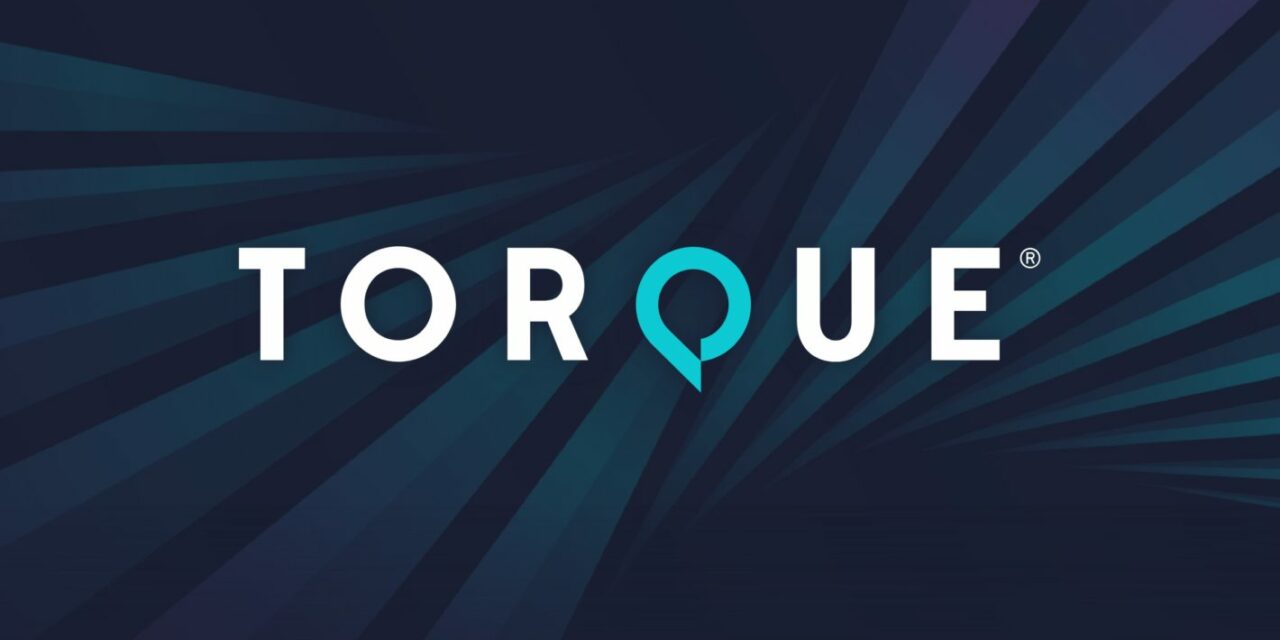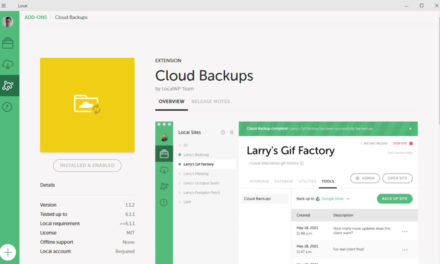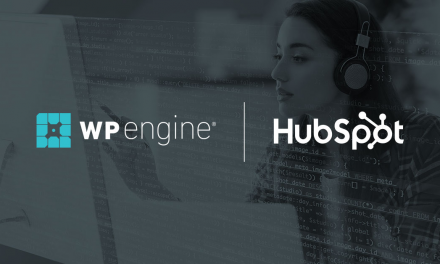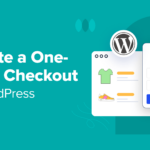Welcome to Press This, the WordPress community podcast from WMR. Each episode features guests from around the community and discussions of the largest issues facing WordPress developers. The following is a transcription of the original recording.
Powered by RedCircle
Doc Pop: You’re listening to Press This, a WordPress community podcast on WMR. Each week we spotlight members of the WordPress community. I’m your host, Doc Pop. I support the WordPress community through my role at WP Engine and my contributions on TorqueMag.io. You can subscribe to Press This on RedCircle, iTunes, Spotify, or your favorite podcasting app. You can also download episodes directly from WMR.fm.
Today, we’re going to be talking about marketing and CRM and what is CRM and how can small businesses that are using WordPress, how can they benefit from using some new tools that we’re going to talk about with our special guest, Adrian Tobey, the CEO of Groundhogg, Mailhawk, and Hollerbox, and a self-described WordPress CRM guy.
Adrian, how are you doing today?
Adrian Tobey: I’m doing good. Thanks for having me on.
DP: Hey, thanks for joining us. Let’s kick this off by just hearing how you got into WordPress.
AT: The year is 2018 and I’m actually going to University of Toronto, which is sort of like Ontario’s biggest university. I think it’s actually Canada’s biggest university. And I was going for computer science. And I was doing the computer science thing, and… I was doing that part time while at the same time working with my parents in their digital marketing agency.
So, we were doing a lot of site builds, mostly with WordPress, and we were using a CRM and marketing automation platform called Infusionsoft. It was called Infusionsoft at the time. Today, people better know it as Keap. And then the branding gets really weird when you get to the plans and there’s like KeeapMax, which is actually the old Infusionsoft and…anyway.
So in 2018, I failed my first ever course in my life in university. It was CS—the course code was CSC, Computer Science 265, it was like big O notation and logarithmic proofs and stuff that was just, I don’t know—stuff that I could probably practically never implement
And so I failed that course and since I was only doing school part time I did the math and I wasn’t going to graduate ‘til like 2024.
So like next year, so it’s from 2018 to like next year, I would have still been in school, you know, working on my degree part time. And I was just like, there ain’t no way that I was going to do that.
And so—after just doing like a bunch of website builds full time which I did during the day and building out custom plugins and doing custom code, and I wrote a plugin called FormLift which was a specific form builder for businesses that used Infusionsoft and WordPress—I just ended up falling into just writing more and more and more code.
And then I’m like, well, I don’t want to keep going to school. So over the summer, I’m like, I got to do something, right? And I wasn’t a huge fan of continuing to trade dollars for hours in the agency model. So I was like, well, what am I going to do?
And it wasn’t going to be FormLift because the total number of potential users is only the maximum number of users that Infusionsoft had at the time, and the subset of those users that also use WordPress. So, it’s very niche, not really big enough to build a super sustainable business.
I noticed that there was no real dedicated CRM for WordPress people. I should say that there wasn’t, there was a product called ZeroBS CRM, which is actually still around, got renamed to Jetpack CRM.
But there was no CRM that had a full fledged CRM plus the marketing automation component, which is kind of what people think of now when they think of CRM.
It’s sort of part and parcel where it’s like, you want to be able to segment your list and then send them an email, or add them to an automation, or do a funnel or, or something. The marketing component is like synonymous now. That didn’t exist within the WordPress ecosystem, and so I made it.
DP: Can you just quickly guess how many plugins you think you’ve made for WordPress?
AT: Oh, well there is FormLift and Groundhogg and Mailhawk. And I didn’t actually make Hollerbox, Scott Bollinger made Hollerbox and then I bought it from him. And then I rebuilt it from the ground up after buying it. It was pretty much a ground up rebuild, so I guess I could say I built it, but he was the original creator.
I also did WP Simple Chat, which is just like a Facebook chat plugin thing, which is just—I don’t monetize that, I just needed a chat thing, and I whipped that up in like an afternoon and called it a day.
There’s been other stuff, just like snippets here and there that sometimes got pulled in the plugins, but as far as the ones that people I think use, that pretty much covers it.
DP: So let’s imagine that I’m a small business owner selling high-end boutique beer coasters.
AT: Very niche.
DP: Yeah, very, looking to go full time. I got my WordPress site. Maybe I’m running WooCommerce, maybe I’m not. and I’m looking to expand my business. I don’t know what to do and I’m ready to kind of dive in.
How could a tool like—I mean, we’re, we’re talking about customer relationship managers, CRMs—how could a tool like Groundhogg help someone like me out?
AT: All right, well, for anyone who’s selling beer coasters, you are about to get some very valuable advice for absolutely free. This isn’t you, is it? You’re not selling boutique beer coasters, are you?
DP: No. no, no, no. They’re not, they’re not selling at all.
AT: Okay.
DP: That’s the problem.
AT: Okay. Well, then…
DP: No, no, I don’t, I don’t have a business selling boutique beer coasters. That’s a totally made up thing.
AT: Totally made up—well, for anyone selling boutique beer coasters, or anything else for that matter, there’s a number of ways where, before I jump into it, I wanna add some caveats to using CRM and, and marketing automation as a growth and sales tool.
So number one is CRM and marketing automation become useful when there’s already people coming through. Like the funnel is being filled at the top.
CRM and marketing automation is bottom of funnel or mid funnel stuff. You have to have traffic for anything that you build in CRM to actually work, or you have to have a list, or you have to have something.
Otherwise, if you imagine all your sales is like a fire, you know, without people, and if CRM is gasoline, you’re just dumping it all over the ground, and it’s not lit—it’s just total waste.
But once you have people—like, once you have traffic coming to the site, and once you start getting subscribers, and once you start getting people going to the checkout page, and even buying, and there’s a little bit of life there, that’s when you need to start investing in tools like these.
So that’s the caveat. If you’re starting from scratch, there’s other stuff that you need to do first, like you need to go build your initial audience and that’s a lot of groundwork and just relationship building and content that you have to do. And, and that’s a slog. And I’ve actually spoken on other podcasts about how I did that many years ago.
So where you, where you start is there’s some low-hanging fruit stuff. People probably hate that phrase, but it’s true. Like, card abandonment is probably the number one thing that I’d recommend for an eCommerce company that’s doing boutique stuff. Basically, the way that it works is someone goes to the checkout page, and they get halfway through.
Maybe they give you an email address and put in their shipping information and phone number, and then they’re all of a sudden gonna click that checkout button, and then their mom calls, or their card declines, or, you know, the wife says, let’s go out to dinner, and whatever—something happens, and they don’t check out.
Well, in Shopify, if anybody’s used Shopify, they actually have this, like, built in as a feature. WooCommerce does not. Basically, you take that person’s email address that they submitted, and there’s, like, a listener on the page that captures that, sticks it in the CRM, puts them in a funnel, and then an hour later, if they still haven’t checked out, shoots them an email to say, “hey, you didn’t check out. Here’s all the stuff that’s in your cart. Click this link, go back to the webpage,” it automatically restores their cart and basically brings them where they left off in the checkout system and all their information’s pre-filled and all they have to do is click that checkout button. Right? Like that’s some low-hanging fruit right there.
I don’t know, some people are against this. I’m not. I’m like, bake it into the margins. But discounting, let’s talk about discounting for a second and how discounting can be combined with lead generation.
DP: Yeah. And also with cart abandonment as well. I mean, going back to the previous topic, that email could also have, “Hey, you haven’t checked out, maybe this 10 percent discount will help get you in.” Right?
AT: Absolutely. And if you are one of those people that likes to do the auto-generated thing, then you can do that. I don’t do auto-generated, because I use my discounts for reporting and you can’t do reporting on generated discount codes. But I’ll make a discount code that looks generated and stick that in there, but then be able to track how many people actually use that discount code, but that’s just me.
Some people like to do auto-generated discount codes, which you can absolutely do.
DP: Let’s take a quick break here and we’re going to come back in and dive into discount codes because I think that’s, that’s a whole next section on it.
So stay tuned. We’re going to take a quick break and when we come back, we’re going to pick up this conversation with Adrian Tobey, the CEO of Groundhogg, about CRMs and some tips for small boutique beer coaster business owners who want to launch their business.
We’ll be right back.
Welcome back to Press This, the WordPress Community Podcast. I’m your host Doc Pop. Today, I’m talking to Adrian Tobey, the CEO of Groundhogg.
Adrian, right before the break, you were talking about discount codes, and I want to give you a chance to just pick up right where you were as far as, like, helping a small business owner with the CRM tools and how maybe using the discount code could help them out.
AT: I think where I left off was I was just talking about doing generated versus non-generated discount codes, and it’s—you know—it’s up to you, whatever you want to do, as long as you get the money, right?
That’s the most important thing, as long as they check out. Where I like to use discount codes—I like to use discount codes in a couple places as lead generation tools on the website before they even get to the checkout page.
The first and my favorite place to do that is in the footer of our website. On every single page I have an email collection form right at the bottom of the page, and above that form, it says, subscribe and discount. Give me your email address and I’ll send you a code for 15 percent off the first year no questions asked.
And I do that on every page of all of my products and I recommend that everybody does this. And, you know, you can go between, like, if you want to go higher or lower, the potential is totally up to you. I like 15%, I think that’s a good number, and that pretty much turns 1 percent of site traffic into an email address, and then converts at 30%, which is pretty good.
And what we do is, basically that 15 percent off discount code is baked into our margin, like the products are priced in a way where that is not necessarily detrimental to the growth of the business. Which again, I recommend that everybody just increase their prices 15 percent and then give out discounts for 15 percent because people think like they’re getting a deal and like, that’s okay. I’m all for that.
But the nice thing is that there’s different kinds of buyers, right? There’s two kinds of buyers. There’s people who just don’t care: they’re going to go to the pricing page, they’re going to buy what they want, they know what they want. They’re just going to go through that.
And then there’s like the deal hunters, and there has to be something for them or else they’re just going to go somewhere else where they can get a deal, right? Now, if you don’t want to sell to deal hunters, that’s your call. I don’t like to leave money on the table, so I want to be able to provide something for them.
So we have that on the form or—I’m sorry—we have that form that collects the email address and sends them a code in the footer of every single page, and what we do is we send them the discount code in an email right away, like “here’s your discount code” with a link to checkout or link to pricing page or whatever.
And then if you don’t use it, three days later we say “hey you gave us your email address and we gave you a code and you haven’t used it yet. What gives?” Right? Link to checkout, link to pricing page.
And then we wait another three days. And if they still don’t do anything with that, we send them an ABC email, which is like: reply A, B, or C. They don’t have to write anything, but A, B, or C.
A: I got abducted by aliens. Don’t message me. B: I’m just waiting until cashflow picks up. Or C: Don’t bother me anymore.
You’d be surprised how many people actually respond to that A, B, C email. And that gives you an opportunity to open up a conversation and do some actual sales work instead of having it all automated.
You don’t have to do that, but I like to do that ’cause I like to have my boots on the ground and know what people are thinking and what struggles people are having so we can, you know, pivot accordingly.
And then the second place we do that, with essentially the same email sequence, is on the checkout page itself. We have a little exit intent 30-second triggered pop-up thing that shows up that says, “hey, you know, you’ve been on the second page for a while. If you’re considering leaving, don’t. Here’s 15 percent off if you give us an email address.”
And then we have like a double email collection there, where we have the abandoned cart stuff plus the sort of little commitment that they did to get that discount code and then they plug that in and then they’re off to the races and they’re happy.
DP: So everything you’re mentioning, it all sounds like really good advice for a small business owner who’s kind of trying to learn the tricks of the trade. And we were kind of talking about this being on a WordPress site and everything you’re mentioning obviously is not in WordPress natively, but the advantage of WordPress is that you can always use plugins.
And are all the features that you’ve kind of talked about so far, you’re talking about email integration. Is that all in Groundhogg or is this a different combination of things that you’re using here?
AT: So the Groundhogg product suite, which includes Groundhogg and all of the integrations and add ons that we offer with it, are completely self-hosted on WordPress.
The only thing that’s not is the actual email delivery, which you could, I suppose, do through your own server, although hosts generally don’t like that. So we have integrations like SendGrid or Postmark, Mailhawk, AWS, etc. And you basically sign up for a plan with one of those people, and then that facilitates the actual delivery of any emails.
But everything else is entirely self-hosted on WordPress. So you own all the data, and you can scale it as much as you want to scale it. And when you get to like 10,000 contacts, no one’s going to knock on your door and be like, “Give us more money!”
DP: I think MailChimp is at 1,000 contacts now. The MailHawk integration that you’re talking about—or the plugin that you’re talking about—that allows you to format the emails and then you use something else to send them, as you said.
Is that also like, I saw a demonstration of that kind of being used and you’re kind of like laying it out, kind of using the WordPress tools, kind of a dashboard, kind of like setting up a post or a page. Is that also used for managing email lists?
AT: So, when we talk about CRM and marketing automation, That means different things to different people.
So Groundhogg is a complete CRM and marketing automation suite. That means your lists, your contacts, all their activity, tracking links, email templates, funnels, automations, logs, everything. It’s like having a complete HubSpot or MailChimp or ActiveCampaign in your WordPress dashboard.
It’s all there. You don’t have to go outside for anything except email delivery.
DP: And of course you can probably export your list if you did want to change to something else later, you could still have access to your list. Cause you own your list.
AT: You own it, right? It’s, that’s the beautiful nature of it. So, like, the, the SaaS people, like the SaaS CRMs, like ActiveCampaigns and your HubSpots, the way that they create The net value for shareholders is lock-in by making it incredibly difficult and painful and expensive for you to hop between any other, between them and any other SaaS CRM out there.
Like, you can’t export anything. And then you don’t own anything. if you just stop paying your MailChimp bill, you can’t log in to MailChimp and get all the stuff that you did. Right? You have to pay that next bill.
Which, you know, COVID hit a lot of businesses hard, you know, it’s scary. So with Groundhogg, you can always have like that little peace of mind because everything that’s on your WordPress website, that’s data that you own. All the tables are there. Open up phpMyAdmin and go have a look—it’s not going anywhere.
DP: You had mentioned—we already kind of talked about discount codes to death—but you are mentioning everything that’s kind of on your site. Someone’s landed on your site, and you did mention that you built your newsletter a little bit before you even got started with CRM, worrying about CRM.
But we haven’t talked yet about social media or even having a YouTube channel, maybe where you drop a code and bring people into your site and then use that code, as you said, to kind of track where they come from. Do you want to talk about how you might tie in social media with your CRM tool?
AT: I’m personally not a great social person. I have somebody doing social who’s much better than me at the moment.
The way that I leverage, well, the way that we leverage (because again, I’m not really doing it), but the way that we leverage social media is… Social media is tough.
Like, a lot of people treat it as just another broadcast channel, and we think of broadcasts as like, just queuing up, like an email blast in MailChimp and sending it to all your subscribers, right?
That’s the way that most people treat, maybe like Twitter, or their Facebook page, or LinkedIn. Definitely LinkedIn. a And people have mixed results when they do that. The way that we leverage social media is by leaving breadcrumbs. And when I talk about leaving breadcrumbs, basically spend some time every day and you queue up or do some searches in your Facebook groups or on Twitter in hashtags.
Basically, you want to just go where your ideal customer is and sift through all the conversations that your ideal customers are having. And participate in a way that allows you to leave breadcrumbs, which lead back to useful and valuable content that you’ve created. Could be a YouTube video, could be a blog post—and from there, people will trickle into your top of funnel.
But I don’t really treat social media as just like a broadcast system, because it’s not very effective most of the time.
DP: Well, on that note, I think we are going to take our final break. And when we come back, I think I’d like to talk about just—since we talked about Groundhogg earlier, I know you had a big release—and we’ll just kind of pick up on some of the new features that you have and some of the things you have in the works as well.
So stay tuned for more with our conversation with Adrian Tobey after the short break.
Welcome back to Press This, the WordPress Community Podcast. I’m your host, Doc Pop.
Today, I’m talking to Adrian Tobey, the CEO of Groundhogg about WordPress and CRM. And I think we’ve done a pretty good job so far of creating a fictional business and turning that boutique beer coaster business into a thriving billion dollar beer coaster business, (I just like my alliteration there).
So now, with all that, I think we could just talk a little bit about like I said, right before the break, Groundhogg just posted a walkthrough of some of your new features. Why don’t you tell us what’s new in the product right now?
AT: So our latest release was mostly to revitalize our email editor, which in all truthfulness had been lagging behind some of our competitors and the market in general.
A few years ago, we actually attempted to do like a Gutenberg-based email editor. And while that was sort of the hype and we went down that rabbit hole and I spent a lot of money going down that rabbit hole—it never really panned out and scrapped the whole thing and took a loss. It’s very painful.
But, starting last year, we went at it again, with vigor and with a different vision in mind. Rather than going to Gutenberg where we just, we just developed from scratch and we did everything from the ground up.
It is a very pleasant experience now to design emails. You can design emails that rival the appearances and the aesthetics of stuff like MailChimp and BeFree or Stripo. You’re basically getting now a comparable experience. It’s blazing fast, much faster than Gutenberg.
I think our customers like it. I hope they like it. It’s been, it’s been out since only Monday. Like we, we went live on—today’s Thursday, right? It only went live like three days ago and nothing’s crashed and burned yet.
So that’s good. I’m pretty happy about that. You know, you got your, you know, you got your image blocks and your button blocks and your text blocks and drag in your custom code blocks, your query loop blocks.
I mean, it’s got everything you basically need to be able to send out a well-formatted newsletter, or like a sales pitch, or you know, you just want to send like a plain text email to people.
Uh, it’s pretty comprehensive as far as being able to design good-looking content in the inbox.
DP: Well, that’s cool. Congratulations on launch and, not having any servers catch fire or anything, since it’s gone live. Do you have something else you’re working on, that you can quickly tell us about, like an upcoming project?
AT: Well, the next upcoming projects are definitely like additional blocks for the email editor and hooking in with WooCommerce and easy little downloads to get like, you know, listing products in there dynamically.
And then after that, revisiting some of our add-ons like payments and calendars. We just want to update all the experiences to be as wonderful as using our new email editor at the moment.
It’s a big product, like we got lots going for us as far as features, and we do like a round Robin where we focus on one feature we get that up and then we have to go around and up bring all the other features up to the new bar that we set for ourselves, so there’s going to be a lot of that in the near future.
DP: Awesome. Well, with that, how can people find out more about Groundhogg and what you’re working on?
AT: Yeah, I mean you can go to the website, Groundhogg with two Gs dot io. We’re on the WordPress repo, and we got lots of YouTube videos there that show some of our new stuff, and suggestions, and marketing strategies.
If you want to find me personally, DM’s open, @AdrianTobey on Twitter slash X. Hit me up!
DP: Awesome. That’s great.
Well, thank you so much, Adrian, for your time. And, we have more episodes coming out. This is a weekly podcast.
Next week, we’ll be talking with Anil Gupta about the MultiCollab plugin for WordPress, which is going to be a very exciting conversation.
Thanks for listening to Press This, a WordPress community podcast on WMR. You can follow my adventures on Twitter, slash X @TheTorqueMag, that’s The Torque Mag, or you can go to TorqueMag.io for more episodes of Press This as well as transcribed versions of each conversation. You can also subscribe on RedCircle, iTunes, Spotify, or download directly from WMR.fm.
I’m your host, Dr. Popular. I support the WordPress community through my role at WP Engine, and I love spotlighting members of that community each and every week on Press This.











